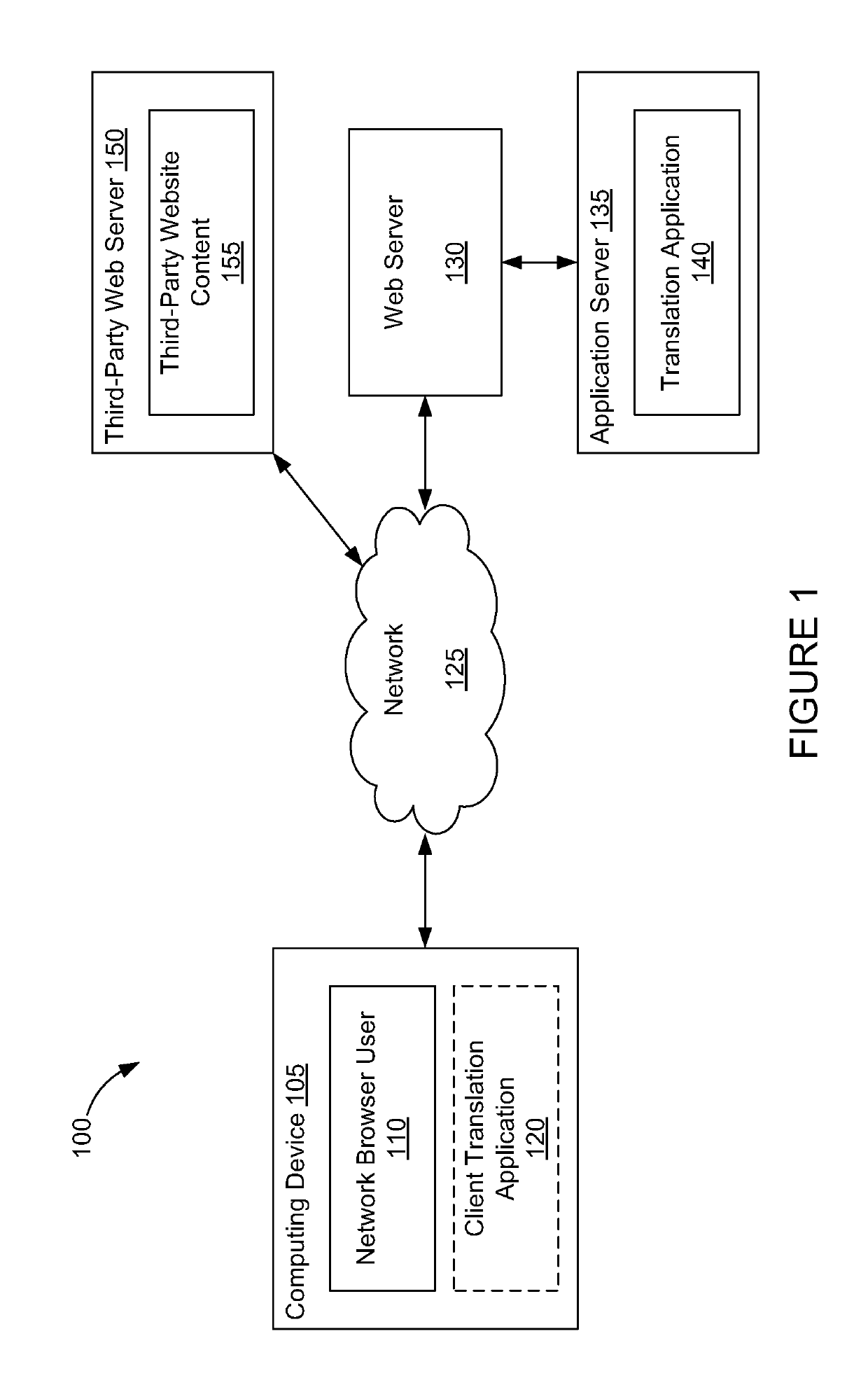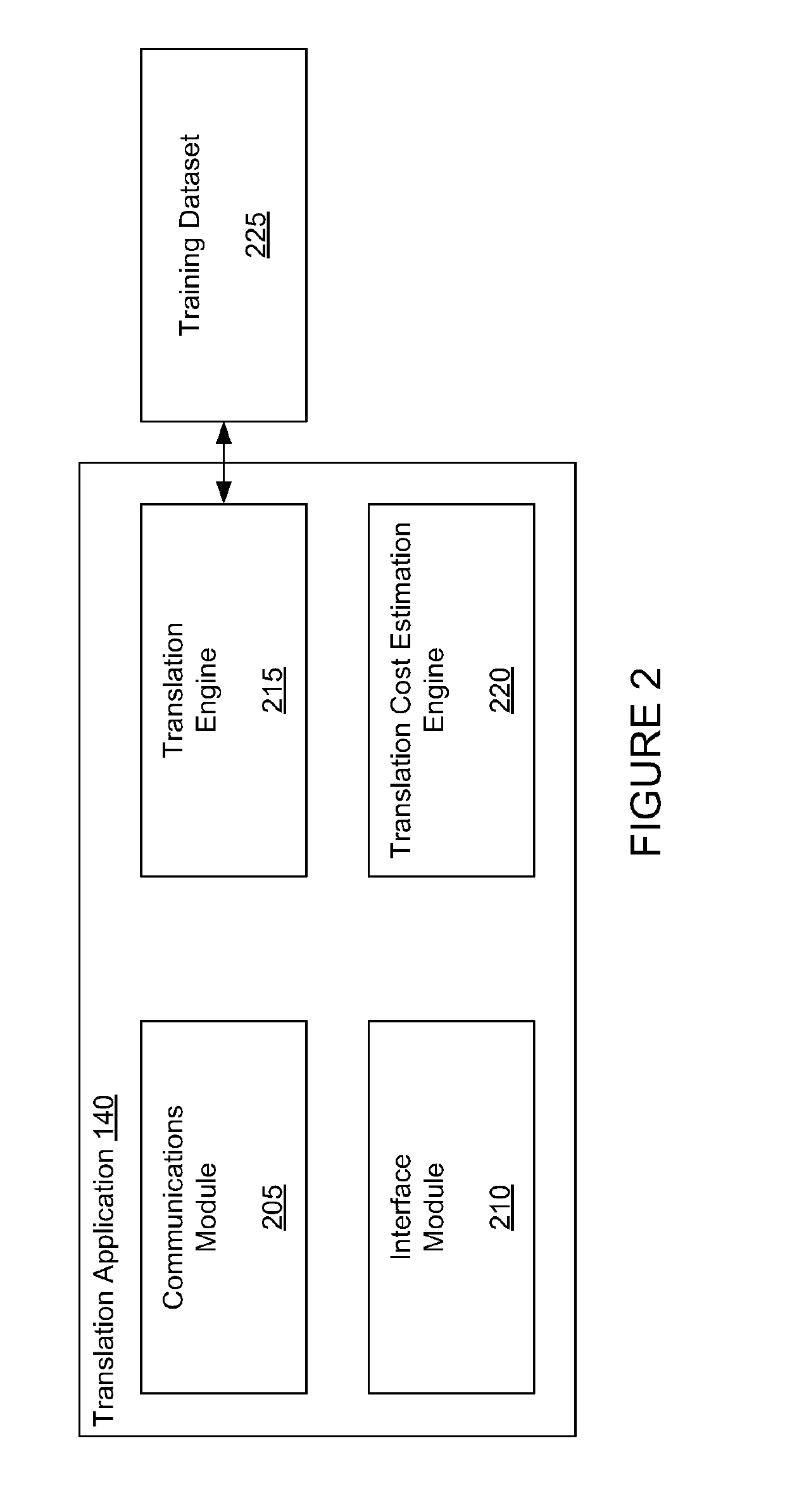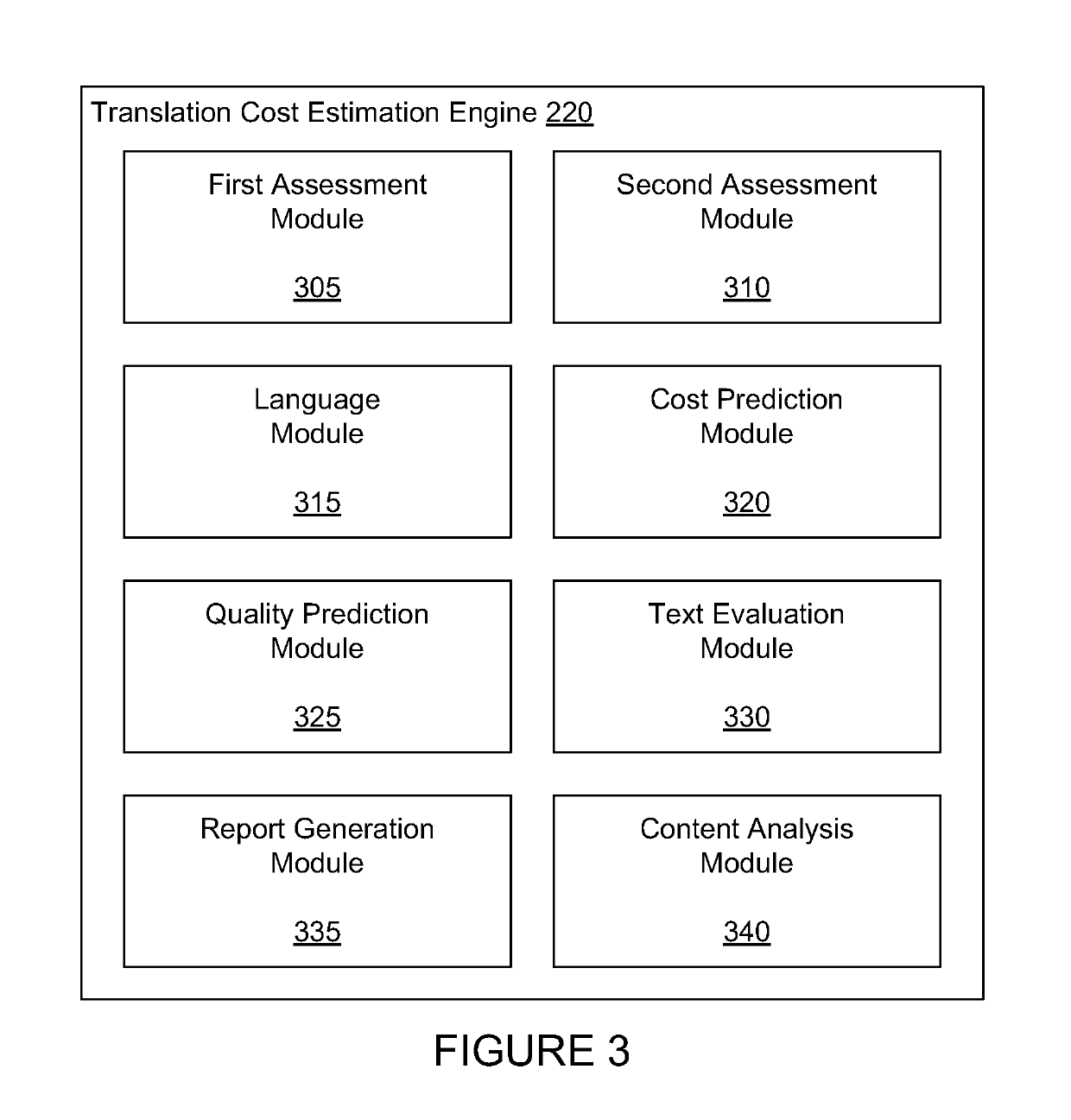Systems and Methods for Translating Textual Content
a textual content and text technology, applied in the field of natural language translation, can solve the problems of existing and expected translation costs, and achieve the effect of predicting the cost of translating
- Summary
- Abstract
- Description
- Claims
- Application Information
AI Technical Summary
Benefits of technology
Problems solved by technology
Method used
Image
Examples
Embodiment Construction
[0015]The present technology may predict the costs for translating existing and expected documents by a combination of human translation and machine translation. Such a body of textual content can include any amount of text ranging, for example, from a few words to a batch of textual items such as websites, books, articles, or letters. The documents can include a first textual content identified for human translation and a second textual content identified for machine translation. The documents that make up the existing textual content, as well as expected textual content that may be forthcoming in the future, may be translated from a current language to a target language. The cost for translating the documents to the target language may be predicted before the translations are performed.
[0016]A prediction of the cost to machine translate the second textual content may be based on a translation quality level associated with one or more portions of the second textual content. Differe...
PUM
 Login to View More
Login to View More Abstract
Description
Claims
Application Information
 Login to View More
Login to View More - R&D
- Intellectual Property
- Life Sciences
- Materials
- Tech Scout
- Unparalleled Data Quality
- Higher Quality Content
- 60% Fewer Hallucinations
Browse by: Latest US Patents, China's latest patents, Technical Efficacy Thesaurus, Application Domain, Technology Topic, Popular Technical Reports.
© 2025 PatSnap. All rights reserved.Legal|Privacy policy|Modern Slavery Act Transparency Statement|Sitemap|About US| Contact US: help@patsnap.com



